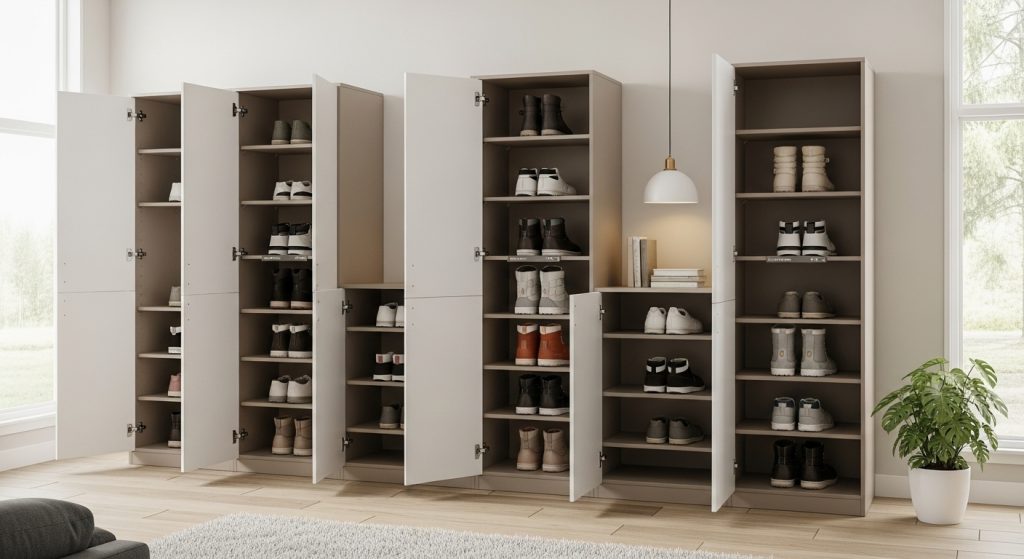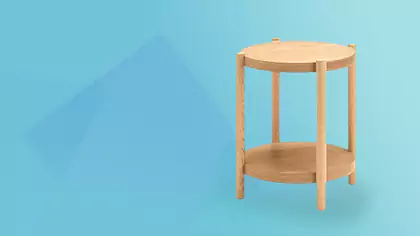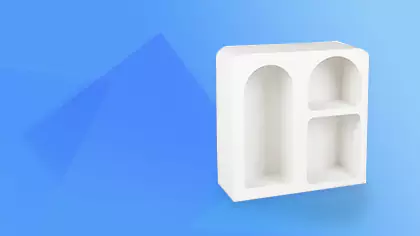Effective shoe cabinet design is the cornerstone of elegant entryway organization. The entryway is the first impression your home makes, but it often becomes a chaotic jumble of discarded footwear. A well-chosen and properly organized shoe cabinet offers the perfect solution. It provides smart shoe storage ideas, conceals clutter, and contributes significantly to a stylish and welcoming atmosphere.

This definitive guide provides an expert overview of hallway storage solutions, focusing on the versatile shoe cabinet. We will explore key design principles, popular styles like the modern shoe rack, and practical organization tips. This ensures your entryway remains both beautiful and highly functional.
What Defines a Great Shoe Cabinet Design?
A great shoe cabinet design successfully balances four crucial elements: practical functionality, seamless style integration, space efficiency, and long-term durability. It must effectively store the required number of shoes while complementing the home’s decor, fitting comfortably within the available space, and being built to withstand daily use. Only when these factors work in harmony does a shoe cabinet truly elevate an entryway.
This balance is key. A cabinet that is purely functional but clashes with the decor disrupts the home’s aesthetic. A beautiful cabinet that doesn’t hold enough shoes or is difficult to use fails in its primary purpose. The best designs are those that appear effortless – elegantly concealing their hard-working nature behind a stylish facade. Achieving this synthesis is the goal of professional entryway organization.
How Does Functionality Drive Design?
Functionality is the primary driver of design. The cabinet must first and foremost meet the user’s storage needs. Key functional considerations include:
- Capacity: How many pairs of shoes does it need to hold? Consider the needs of all household members plus potential guest storage.
- Accessibility: How easy is it to retrieve and put away shoes? Tilt-out drawers offer quick access, while shelves might require more careful placement.
- Shoe Type: Does it need to accommodate tall boots, high heels, or bulky sneakers? This dictates the required height and depth of compartments.
- Ventilation: Good airflow is important to prevent odors and moisture buildup. Look for designs with subtle ventilation features, like slatted backs or small gaps.
Why is Style Integration Crucial for Entryways?
Style integration is crucial because the entryway sets the aesthetic tone for the entire home. The shoe cabinet is often a prominent piece of furniture in this space. Its style should complement the existing decor, whether it is modern, traditional, rustic, or Scandinavian. A well-chosen cabinet enhances the first impression. A poorly chosen one can create visual discord right at the front door. The global furniture market reflects a wide array of styles to meet this need.
How Does Space Efficiency Play a Role?
Space efficiency is paramount, especially in smaller entryways or narrow hallways. Shoe cabinets are available in various dimensions. Slim-profile designs with shallow depths are specifically engineered for tight spaces. Vertical designs that utilize height rather than width are also excellent space-saving solutions. The cabinet should provide maximum storage within the smallest possible footprint, without obstructing traffic flow. This principle is key for effective hallway storage solutions.
What Materials Ensure Durability?
Durability ensures the shoe cabinet can withstand the daily wear and tear of an entryway environment. Common materials include:
- Solid Wood: Offers excellent durability, natural beauty, and can often be refinished. Prone to scratches if not cared for.
- Engineered Wood (MDF/Plywood): A cost-effective option. Quality varies greatly. High-density MDF with a durable laminate or veneer finish is preferable to low-density particleboard.
- Metal: Very durable and offers a modern or industrial aesthetic. Can be prone to rust in damp environments if not properly finished.
- Plastic/Polypropylene: Lightweight and easy to clean, often used for modular or budget-friendly options. May lack the aesthetic appeal of other materials. Choose a material that balances your budget, style preferences, and the expected level of use.
What Are Popular Shoe Cabinet Styles for Modern Homes?
Popular shoe cabinet design styles for modern homes emphasize clean lines, functional simplicity, and seamless integration with contemporary decor. These designs move beyond purely utilitarian storage. They become stylish furniture pieces in their own right. The focus is on creating an organized entryway that feels calm, uncluttered, and sophisticated.
How Do Minimalist Shoe Cabinets Work?
Minimalist shoe cabinets are characterized by their extreme simplicity and clean facades. They often feature:
- Handleless Designs: Using push-to-open mechanisms or integrated edge pulls for a seamless look.
- Slim Profiles: Very shallow depths, often utilizing tilt-out drawers.
- Neutral Colors: Typically finished in white, black, gray, or light wood tones.
- Wall-Mounted Options: Enhancing the minimalist feel by floating above the floor. These cabinets blend discreetly into the background, providing hidden storage without drawing attention.
What Characterizes Scandinavian Shoe Storage?
Scandinavian shoe storage embodies the principles of simplicity, functionality, and natural materials. Key characteristics include:
- Light Wood Tones: Often crafted from oak, ash, or birch with a natural or whitewashed finish.
- Clean Lines: Simple, unadorned silhouettes with functional details.
- Tapered Legs: Often feature slightly angled, tapered legs for a lighter feel.
- Combination Storage: May combine drawers or doors with open cubbies for versatile use. The look is warm, airy, and highly practical, aligning with the hygge concept of cozy functionality.
What Defines an Industrial Shoe Rack or Cabinet?
An industrial modern shoe rack or cabinet blends raw materials for a rugged yet stylish look. Defining features are:
- Metal Frames: Often feature black or dark bronze metal frames or legs.
- Wood Accents: Combine metal with solid wood shelves or cabinet boxes, sometimes with a distressed finish.
- Open Shelving: Frequently utilize open shelves or cubbies for easy access and a less formal feel.
- Mesh Details: May incorporate wire mesh panels on doors or sides. This style provides a robust, utilitarian aesthetic that works well in lofts or modern urban spaces.
How Do Multi-functional Benches Offer Seating and Storage?
Multi-functional entryway benches are a highly popular solution. They combine essential seating with integrated shoe storage underneath.
- Built-in Cubbies: Open cubbies under the bench provide easy slots for everyday shoes.
- Drawers or Baskets: Drawers or space for storage baskets offer concealed storage.
- Lift-Top Storage: Some benches have a hinged top that reveals hidden storage inside. These pieces are incredibly practical, providing a place to sit while putting on shoes and keeping footwear neatly organized. Our guide to multifunctional entryway furniture ideas with storage explores these versatile options.
How to Choose the Right Size Shoe Cabinet?
Choosing the right size shoe cabinet requires a careful assessment of both your storage needs and the physical constraints of your entryway. A cabinet that is too small will quickly become overwhelmed. One that is too large will dominate the space and impede movement. Finding the perfect balance is key to successful entryway organization.
How Do You Assess Your Shoe Storage Needs?
Assessing your needs involves more than just a quick headcount.
- Count the Pairs: Realistically count the number of shoe pairs regularly worn by each household member that need to be stored in the entryway. Be honest!
- Consider Shoe Types: Factor in the size and shape of the shoes. Bulky sneakers, high heels, and tall boots require more space or specialized compartments than flat sandals or children’s shoes.
- Factor in Guest Storage: If you frequently host guests, consider allocating a small amount of space for their shoes.
- Think Seasonally: Do you need space for bulky winter boots only part of the year? Consider if seasonal rotation is feasible. Underestimating capacity is a common mistake that leads to overflow and clutter.
Why is Measuring Your Entryway Space Critical?
Measuring your available space is non-negotiable. Use a tape measure to determine the maximum allowable:
- Width: Measure the wall space where the cabinet will go. Ensure it doesn’t block doorways or walkways.
- Depth: This is crucial in narrow hallways. Measure how far the cabinet can project from the wall without becoming an obstacle. Remember to account for door swings (both the cabinet’s and any nearby room doors).
- Height: Consider the vertical space available. Taller, narrower cabinets can maximize storage in small footprints. Ensure the height doesn’t interfere with light switches, thermostats, or wall decor. Comparing these measurements to a cabinet’s dimensions before buying prevents costly mistakes.
How Does Shoe Type (Boots, Heels) Impact Cabinet Choice?
The types of shoes you own significantly impact the ideal internal configuration.
- Boots: Require taller compartments. Look for cabinets with adjustable or removable shelves to accommodate varying boot heights. Some specialized boot racks are designed specifically for this.
- High Heels: Can be awkward to store. Angled shelves or specialized heel holders can help keep them organized and prevent damage. Ensure the compartment depth is sufficient.
- Large Sizes/Bulky Shoes: Men’s shoes or bulky athletic sneakers require deeper and wider compartments than smaller footwear. Check the internal dimensions, not just the external ones. Choosing a cabinet with adjustable or varied compartment sizes offers the most flexibility.
What Are Smart Shoe Storage Ideas Within the Cabinet?
Smart shoe storage ideas focus on maximizing space and maintaining order within the cabinet itself. A well-designed interior prevents shoes from becoming a jumbled pile. It makes finding the pair you need quick and easy. These internal organization strategies are key to making the cabinet truly functional.
How Do Adjustable Shelves Maximize Flexibility?
Adjustable shelves are perhaps the most valuable feature for accommodating a diverse shoe collection. They allow you to customize the height of each compartment. This means you can create taller spaces for boots and shorter spaces for flats or sandals, maximizing the usable vertical space and preventing wasted air gaps. Look for shelves with multiple potential positions.
What Are the Benefits of Pull-Out Drawers or Trays?
Pull-out drawers or trays offer excellent accessibility, especially in deeper cabinets. Instead of reaching into the back of a dark shelf, you can simply slide the drawer out to see and access all the shoes stored within it. This is particularly helpful for lower shelves. Some designs feature wire mesh drawers, which also improve air circulation.
Why Use Angled Shelves in Slim Cabinets?
Angled shelves are a clever design feature often found in very slim, space-saving cabinets. The shoes rest on the shelf at an angle, typically heel down. This allows the cabinet to have a much shallower depth while still accommodating the length of the shoes. Tilt-out cabinets operate on a similar principle, storing shoes almost vertically. This is a brilliant solution for narrow hallway storage solutions.
How Can Dividers Help Organize Pairs?
Simple vertical dividers within larger cubbies or shelves can help keep pairs of shoes neatly separated and organized. This prevents them from tumbling onto each other and makes it easier to maintain order. Dividers are especially useful for children’s shoes or smaller footwear like sandals. This strategy is highlighted in our guide on how to organize shoes in small spaces without clutter.
How to Integrate a Shoe Cabinet Seamlessly into Entryway Decor?
Integrating the shoe cabinet seamlessly involves making it feel like an intentional and attractive part of your entryway design, not just a utilitarian storage box. This is achieved by coordinating its style and finish with other elements and by thoughtfully styling its surface.
How Can the Cabinet Double as a Landing Strip?
The top surface of the shoe cabinet provides a valuable “landing strip” – a convenient spot to drop keys, mail, and other small items when you enter the home. To keep this area organized and stylish:
- Use a Tray: A decorative tray is essential for corralling these small items and preventing clutter. Choose a tray that complements the cabinet’s style (e.g., wood, metal, ceramic).
- Keep it Minimal: Resist the urge to overcrowd the surface. Limit it to the tray and perhaps one or two small decorative accents.
What Decor Works Well on Top of a Shoe Cabinet?
The decor placed on top should be chosen carefully, considering the cabinet’s height and the overall style.
- Lower Cabinets: Can accommodate a small table lamp, a vase with flowers, or a framed photo. Treat it like a small console table.
- Taller Cabinets: Have limited surface space. Focus on functional items like the key tray, perhaps adding a very small plant or a single decorative object.
- Wall Decor Above: Hanging a mirror or artwork above the shoe cabinet helps to integrate it visually and draws the eye upward, making the arrangement feel more substantial.
How to Coordinate Colors and Finishes?
Coordinate the color and finish of the shoe cabinet with other elements in the entryway for a cohesive look.
- Match Wood Tones: If you have other wooden furniture or trim, choose a cabinet with a similar wood tone or finish.
- Complement Paint Colors: Select a cabinet finish (painted, wood, or metal) that complements your wall color. A white cabinet against a light wall feels airy. A dark cabinet against a light wall creates contrast.
- Echo Hardware: If possible, match the cabinet’s hardware (handles or knobs) to other metal finishes in the space (like light fixtures or door hardware).
Should the Shoe Cabinet Match Other Furniture?
The shoe cabinet does not necessarily need to be part of a matching furniture set. However, it should feel stylistically related to other pieces in the entryway or adjacent rooms. If your style is modern, choose a modern shoe cabinet. If your style is rustic farmhouse, choose one that fits that aesthetic. It can serve as a standalone accent piece, but its design language should feel harmonious with the overall environment.
What Are Creative Shoe Storage Solutions for Tiny Entryways?
Tiny entryways demand creative thinking. When even a slim console-style cabinet is too large, alternative shoe storage ideas must be employed. These often involve utilizing vertical space or choosing ultra-compact designs. Our guide to creative shoe storage ideas for tiny entryways explores these further.
How Do Slim Tilt-Out Cabinets Save Space?
Ultra-slim tilt-out shoe cabinets are a brilliant invention for tight spaces. These cabinets are often only 6-8 inches deep. They feature drawers that tilt open, revealing compartments where shoes are stored vertically or at a steep angle. They provide significant storage capacity within an incredibly shallow footprint, making them ideal for narrow hallways.
What Are the Advantages of Wall-Mounted Options?
Wall-mounted shoe racks or cabinets offer the ultimate space-saving solution by keeping the floor completely clear. This enhances the sense of spaciousness and makes cleaning much easier. Options range from simple floating shelves designed for shoes to shallow cabinets that mount directly to the wall. Our guide to wall-mounted shoe cabinet ideas to save floor space showcases various styles. Secure mounting is critical for these options.
Can Vertical Shoe Racks Work in Narrow Spaces?
Tall, narrow vertical shoe racks can be a good solution for utilizing corner spaces or very small wall sections. Look for designs that have a small footprint but maximize height. Some models rotate like a lazy Susan, providing easy access to many pairs in a compact unit. Ensure the design is stable to prevent tipping.
How to Maintain and Organize Your Shoe Cabinet Long-Term?
Maintaining an organized shoe cabinet requires developing consistent habits. It is not a “set it and forget it” solution. Regular decluttering, cleaning, and adherence to simple organizational rules are necessary to prevent it from reverting to chaos.
What is the Importance of Regular Decluttering?
Regular decluttering is essential. Shoes that are broken, uncomfortable, or no longer worn should be removed from the prime real estate of the entryway cabinet. Implement a seasonal rotation: store out-of-season footwear elsewhere (like under the bed or in a closet) to free up space for current shoes. Aim to declutter the cabinet at least twice a year. The benefits of decluttering on mental well-being are widely recognized.
How to Clean Different Cabinet Materials?
Cleaning methods vary by material.
- Wood: Dust regularly. Clean spills promptly with a slightly damp cloth, drying immediately. Avoid harsh chemicals.
- Laminate/Veneer: Wipe with a damp cloth and mild detergent. Dry thoroughly. Avoid excessive moisture, especially near edges where the core material might be exposed.
- Metal: Wipe with a damp cloth. Dry to prevent water spots or rust.
- Plastic: Clean easily with mild soap and water. Always check the manufacturer’s care instructions.
How Can Shoe Inserts or Organizers Help?
Small inserts can help maximize space and maintain order within individual compartments. Shoe stackers allow you to store one shoe on top of the other in a single slot, effectively doubling capacity for flatter shoes. Small dividers can keep pairs neatly separated.
Why Implement a “One In, One Out” Rule?
The “one in, one out” rule is a simple but powerful habit for preventing accumulation. When you buy a new pair of shoes, make a commitment to remove an old pair from your collection (either donating, selling, or discarding). This prevents the total number of shoes from constantly increasing, ensuring your storage solution remains adequate.
Conclusion
A well-chosen and organized shoe cabinet is a transformative piece for any entryway. It is the key to conquering clutter and creating a first impression that is both stylish and serene. By carefully considering shoe cabinet design, assessing your functional needs, selecting the right size and style, and implementing smart shoe storage ideas, you can create a highly effective system. These hallway storage solutions bring order and beauty to one of the most challenging areas of the home, proving that practicality and elegance can coexist beautifully.











